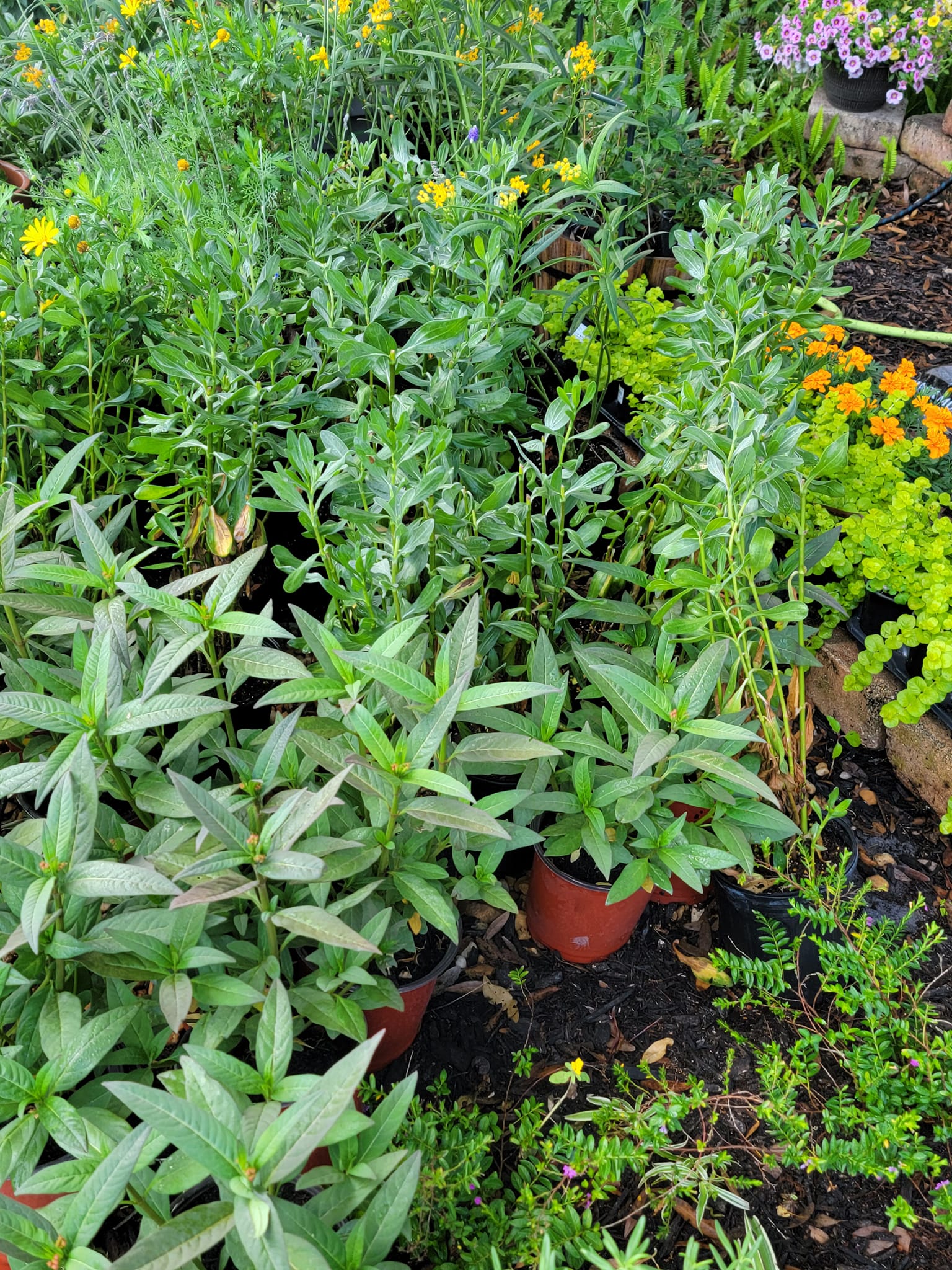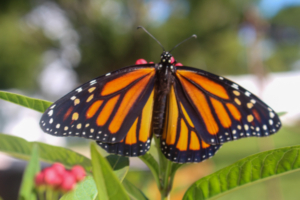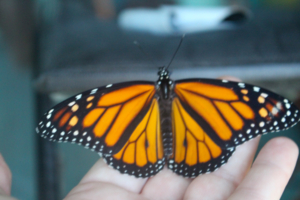TAKE ACTION AND START A MONARCH BUTTERFLY GARDEN
Learn how to start a monarch butterfly garden.
 The monarch butterfly (Danaus plexippus) population in North American has been in decline over the last twenty years. Teachers and youth organization leaders can take action and help the monarch recover by planting a monarch butterfly garden.
The monarch butterfly (Danaus plexippus) population in North American has been in decline over the last twenty years. Teachers and youth organization leaders can take action and help the monarch recover by planting a monarch butterfly garden.
Monarch gardens can be started nearly anywhere. One place to consider planting a garden is a schoolyard or in existing landscaping where monarch-attracting plants can be incorporated. If areas are not available on school premises consider working with local gardening clubs or parks. Every new monarch butterfly garden that is planted can have a positive impact on the monarch’s stressed population. The key is to locate a garden in a place where butterfly-attracting plants will grow well.
When first considering starting a monarch garden you should ask yourself some basic questions.
Does your property have the right conditions to support a monarch garden?
How much space do you have to develop your garden?
Do you plan to include monarch attracting plants to an existing garden?
Do you plan to expand your garden?
How much time will you spend on your garden?
The answers to these questions will help determine the garden size and plant choices. So, take a little time to think about some important details noted below before you start digging.
GARDEN SIZE
The size of your garden really depends on what is available to you. However, if you can establish a garden plot with at least 100
square feet you will be able to provide an adequate number of plants needed to both attract and hold monarchs. Remember that nectar plants bring butterflies to your garden, but the milkweed keeps them in your garden. If your area is limited and you already have a garden spot established, you may consider adding some monarch-attracting plants.
SUNLIGHT
The native plants that attract monarchs grow best in sunny areas, so your garden needs to be in full sun (at least 6 hours or more a day). Butterflies prefer areas with little to no wind. Plants can be protected from the wind by large shrubs, hedgerows, or fences. While most butterflies and butterfly plants prefer lots of sun, shade can also be utilized in a butterfly garden. Some plants grow better in partial sun, and the butterflies may need refuge from the hottest period of the summer.
SOIL CONDITIONS
Many native butterfly plants prefer well-drained soil that’s rich in organic matter. Compost is an excellent additive for increasing organic matter in your soil. However, it is important that you research soil requirements for all your plants before planting. This gives you the best chance to grow thriving plants!
LARVAL FOOD PLANTS
Milkweed is the cornerstone of a successful monarch butterfly garden. Female monarchs only lay their eggs on milkweed and monarch caterpillars need milkweed plants to grow and develop. Plant at least 10 milkweed plants in your garden. Otherwise, there is a good chance your monarch caterpillars will run out of milkweed and food. You may also want to consider planting different species of milkweed as they will mature and flower at different times of the year allowing for monarchs to use your garden longer through the season. Milkweeds to consider include the common milkweed (Asclepias syriaca), butterfly weed
(Asclepias tuberosa), purple milkweed (Asclepias purpurascens), whorled milkweed (Asclepias verticillata), and the swamp milkweed (Asclepias incarnata). Swamp milkweed is an exception to most butterfly plants, as it will tolerate poorly drained soils. See the list below for details regarding milkweed flower colors and flowering times.
ADULT FOOD PLANTS
Adult butterflies feed on many different types of nectar plants. Nectar plants provide food and energy for pollinators such as bees and butterflies. Nectar is a kind of sugar water that contains amino acids, proteins, organic acids, and vitamins. It serves as a fuel and is the only source of energy for pollinators. Butterflies need sugar to fuel their search for mates and egg-laying sites.
A common mistake in butterfly gardening is planting only one nectar source. Plant different nectar source plants with different colored flowers that bloom throughout the season. That way nectar is available for adult monarchs during the breeding season on into the fall migration. Also, consider plants of different heights to help provide shelter for the butterflies from wind and predators. Plant at least four biennial or perennial nectar plants, in groups of four or five, to provide nectar for the butterflies throughout the season. The plants should be spaced evenly, but not overcrowded. See the list below for details regarding flower colors and flowering times.
MAINTAINING YOUR MONARCH GARDEN
Maintaining a monarch butterfly garden does require some time and effort. The regular examples of maintenance include regular watering and weeding, mulching and removing invasive plants, fertilizing and/or amending the soil, and removing dead stalks.
An important action to take is to eliminate the use of insecticides. If you want butterflies you need to provide an environment that protects the caterpillars. This means that you should eliminate the use of chemicals for controlling caterpillars at least in and around your monarch garden.
ADDITIONAL FEATURES TO CONSIDER IN YOUR GARDEN
While planning your garden you may wish to add a few large stones to your garden design for the butterflies to land on and bask in the sun. Also, if you have room, add a garden bench so you can sit back and enjoy all those butterflies that will be visiting your butterfly garden. You’ll be happy to know that focusing on monarchs will bring lots of bonus butterflies and pollinators to your garden.
USING NATIVE WILDFLOWERS IN YOUR MONARCH GARDEN
Often the initial enthusiasm about planting your monarch butterfly garden can fade especially when your efforts aren’t rewarded as soon as you would like. When the realities of weed pulling set in, along with a season or two of less-than-ideal results, it can seem that all your hard work has been for naught. Don’t get discouraged. It will take a period of time for some of the native species in your garden to establish. Also, remember that monarch numbers are down and it might take them a season or two to discover your new garden. To alleviate frustration it is recommended that you set out individual butterfly plants as opposed to sowing seeds. Also, you may wish to include a few species that can be counted on to germinate and bloom readily like black-eyed Susan and purple prairie clover. You might also consider setting out annual flowers in large pots to attract butterflies. That way you can still attract butterflies but leave the native plant aspect of the garden intact.
Milkweed Plants

Butterfly Weed (Asclepias tuberosa)
Bloom Period: June – July
Flower Color: Orange
Light Preference: Sunlight shade
Soil Moisture: Average
Mature Height: 24 – 36 inches
Mature Spread: 18 – 30 inches
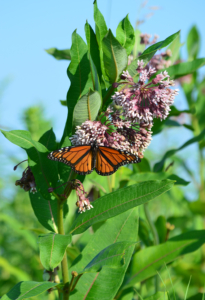
Common Milkweed (Asclepias syriaca)
Bloom Period: June-August
Flower Color: Lavender
Light Preference: Sunlight shade
Soil Moisture: Average
Mature Height: 48 – 60 inches
Mature Spread: 36 – 60 inches
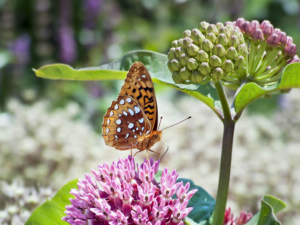
Purple Milkweed (Asclepias purpurascens)
Bloom Period: May – June
Flower Color: Rose-Purple
Light Preference: Sun – medium shade
Soil Moisture: Dry – average
Mature Height: 24 – 48 inches
Mature Spread: 18 – 24 inches

Swamp Milkweed (Asclepias incarnata)
Bloom Period: August – September
Flower Color: Rose-Purple
Light Preference: Sun – medium shade
Soil Moisture: Average – moist
Mature Height: 48 – 60 inches
Mature Spread: 24 – 36 inches
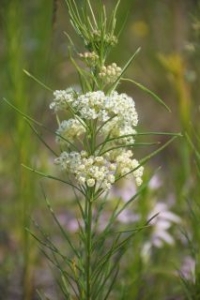
Whorled Milkweed (Asclepias verticillata)
Bloom Period: July – September
Flower Color: White
Light Preference: Sunlight shade
Soil Moisture: Dry – average
Mature Height: 18 -24 inches
Mature Spread: 6 – 12 inches
Nectar Plants
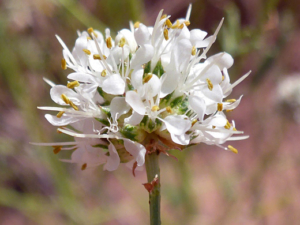
White Prairie Clover (Dalea candida)
Bloom Period: June-July
Flower Color: White
Light Preference: Sun
Soil Moisture: Dry to average
Mature Height: 18-26 inches
Mature Spread: 16-20 inches
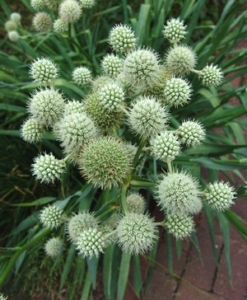
Rattlesnake Master (Eryngium yuccifolium)
Bloom Period: July –August
Flower Color: White
Light Preference: Sun to light shade
Soil Moisture: Average
Mature Height: 30-48 inches
Mature Spread: 16-24 inches
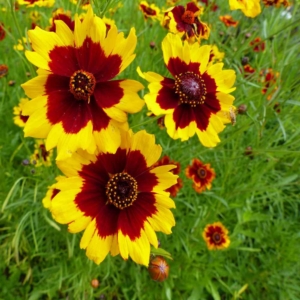
Lanceleaf Coreopsis (Coreopsis lanceolata)
Bloom Period: May—June
Flower Color: Yellow
Light Preference: Full sun to light shade
Soil Moisture: Dry to average
Mature Height: 16-24 inches
Mature Spread: 12-24 inches
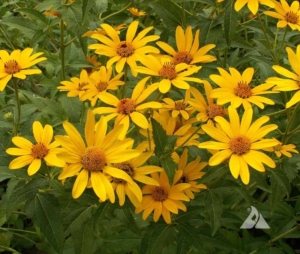
Ox-eye Sunflower (Heliopsis helianthoides)
Bloom Period: June-September
Flower Color: Yellow
Light Preference: Sun to light shade
Soil moisture: Dry to moist
Mature Height: 24 – 48 inches
Mature Spread: 18-30 inches
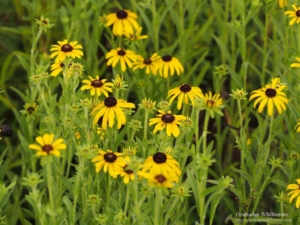
Missouri Coneflower (Rudbeckia missouriensis)
Bloom Period: July-August
Flower Color: Yellow
Light Preference: Sun
Soil Moisture: Dry to average
Mature Height: 20–30 inches
Mature Spread: 16–24 inches
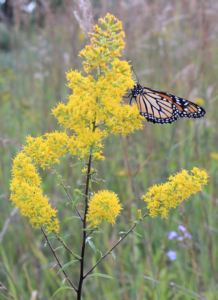
Showy Goldenrod (Solidago speciosa)
Bloom Period: September – October
Flower Color: Yellow
Light Preference: Full sun to light shade
Soil Moisture: Dry to average
Mature height: 24 to 48 inches
Mature Spread: 18 to 24 inches
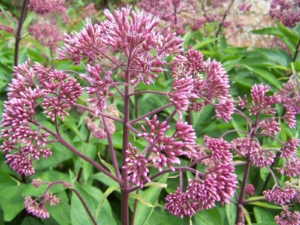
Sweet Joe Pye Weed (Eupatorium purpureum)
Bloom Period: July – September
Flower Color: Pale Pink
Light Preference: Sun to light shade
Soil Moisture: Average
Mature Height: 48 – 72 inches
Photo courtesy Mature Spread: 18-24 inches
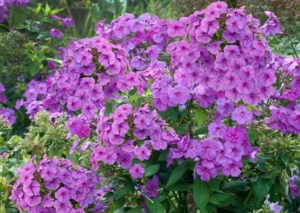
Perennial Phlox (Phlox paniculata)
Bloom Period: July – September
Flower Color: Pink
Light Preference: Full sun to shade
Soil Moisture: Average to moist
Mature Height: 30 – 48 inches
Mature Spread: 24 – 30 inches
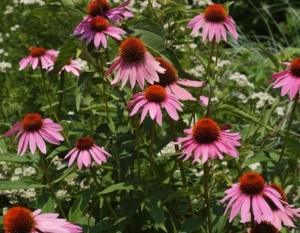
Purple Coneflower (Echinacea purpurea)
Bloom Period: June to August
Flower Color: Pink/Purple
Light Preference: Sun to medium shade
Soil moisture: Average to moist
Mature Height: 30-40 inches
Mature Spread: 18-24 inches

Wild Bergamot or Bee Balm (Monarda fistulosa)
Bloom Period: June – July
Flower Color: Lavender
Light Preference: Sun to light shade
Soil Moisture: Dry to average
Mature Height: 36-48 inches
Mature Spread: 16-24 inches
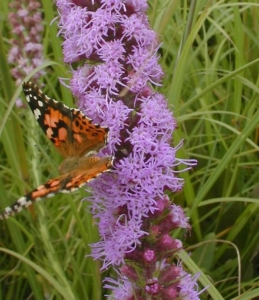
Prairie Blazing Star (Liatris pycnostachya)
Bloom Period: July – September
Flower Color: Purple
Light Preference: Sun
Soil Moisture: Average to moist
Mature Height: 36–48 inches
Mature spread: 12–20 inches
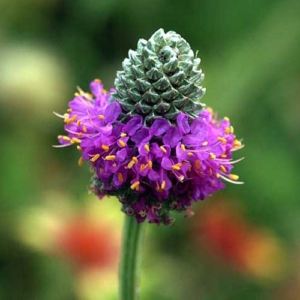
Purple Prairie Clover (Dalea purpurea)
Bloom Period: May–September
Flower Color: Purple
Light Preference: Sun
Soil Moisture: Dry to average
Mature Height: 18–24 inches
Mature Spread, 16–20 inches

New England Aster (Symphyotrichum novae-angliae)
Bloom Period: September – October
Flower Color: Purple
Light Preference: Sun to medium shade
Soil Moisture: Average to moist
Mature Height: 40-60 inches
Mature Spread: 24-36 inches
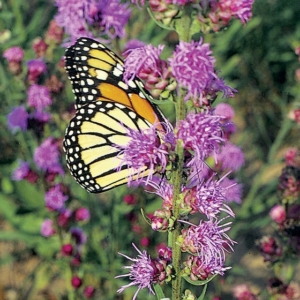
Rough Blazing Star (Liatris aspera)
Bloom Period: September
Flower Color: Purple
Light Preference: Sun to light shade
Soil Moisture: Dry to average
Mature Height: 24 – 48 inches
Mature Spread: 12 – 16 inches
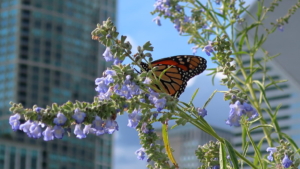
Blue Sage (Salvia azurea)
Bloom Period: August – September
Flower Color: Blue
Light Preference: Full sun to light shade
Soil Moisture: Dry to average
Mature Height: 3 to 5 feet
Mature Spread: 16 to 20 inches


